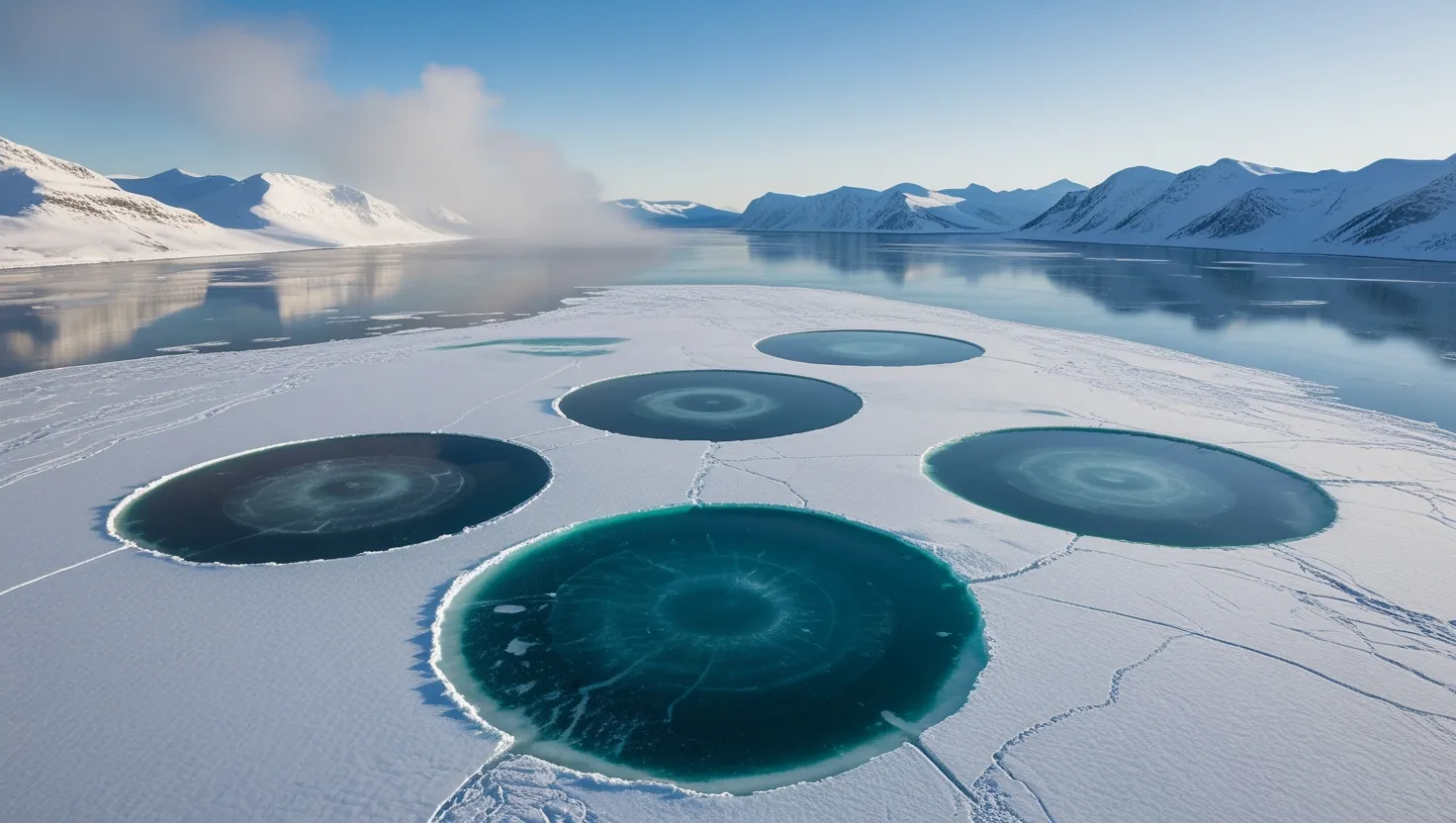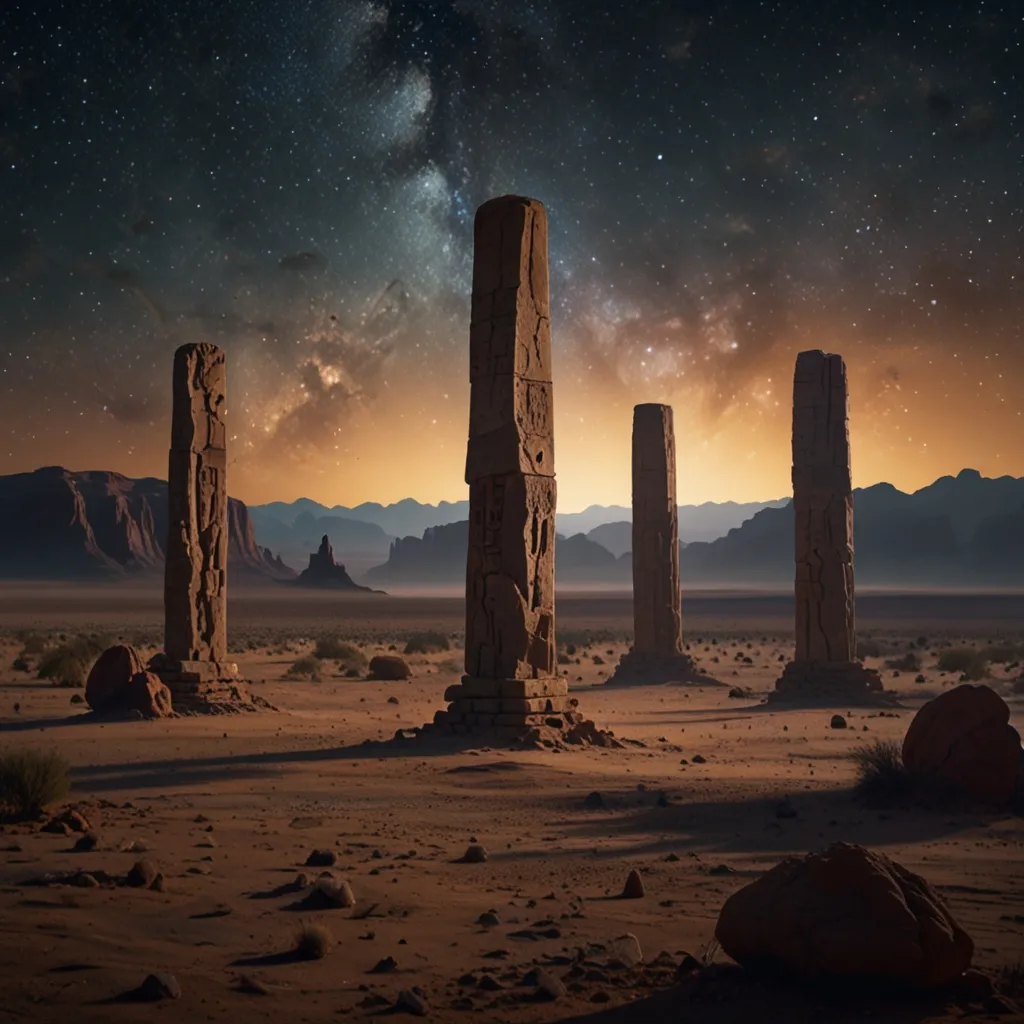I want you to picture a winter morning in central Siberia. Sunlight creeps over mountains, cold fog curls above a frozen plain, and in the heart of it all lies Lake Baikal—the oldest and deepest lake on Earth. What astonishes even seasoned field scientists is not just the lake’s surreal beauty or the crackle of its meter-thick ice. It’s the sudden appearance, some years, of vast, smooth-edged circles pressed into the white. These ice circles, sometimes wider than a football field, seem to have been drawn by an invisible compass and have defied solid scientific explanation for decades.
Let’s admit it: circles in nature are not that rare. We see them in everything from spiderwebs to water lilies. But the ice circles on Baikal are of another category. They arrive quietly during the depth of the Siberian freeze, often persisting for weeks. You might walk over the surface without ever suspecting that, just a few meters below, something has carved a thin, nearly perfect ring in the solid ice. What force is at work here? Is it geophysical? Biological? Or something stranger still?
Baikal’s ice is not just any ice. Each winter, it forms transparent blue-green sheets a meter or more thick, strong enough to drive trucks across. Yet, these mysterious circles remain fragile, their thin membranes contrasting the thick surroundings. Here’s the first puzzle: what process could maintain such a precisely defined, ephemeral structure while the rest of the lake turns to stone?
Traditional ideas point to methane. Baikal is a bubbling cauldron of geological energy, and methane vents erupt all over its bed. Sometimes this gas gets trapped under the ice, and when it escapes, it can create holes or ragged melt patterns. But the circles are too perfect, too stable. Chaotic gas release can’t account for their symmetry. Thermal imaging shows only barely detectable differences in water temperature under the circles. If there are modest currents involved, they’re not behaving as known physics predicts.
So, I find myself wondering—what are we missing? Imagine you are a physicist, a mathematician, a geologist. You’ve run the models, mapped the flows, measured the heat transfers. Nothing quite fits. The sheer regularity and stability of these rings, enduring for weeks despite the mayhem of freeze and thaw, just don’t add up.
“Science is the great antidote to the poison of enthusiasm and superstition.” —Adam Smith
But then I talk to local Buryat elders, whose ancestors have watched Baikal for centuries. In their stories, these circles are “breathing points” of the lake, sites where the lake spirit rises to exhale. These tales aren’t data in the strict sense, but I’ve learned not to overlook indigenous knowledge—stories can hint at overlooked mechanisms. What do these traditions know that satellite instruments miss?
Not all puzzles belong purely to the realm of hard science. There’s a strand of inquiry that follows the region’s seismic activity. Baikal sits on a tectonic rift. Some researchers speculate that micro-tremors bend and fracture the ice subtly, creating upwelling currents that thin out specific areas. Maybe these events are rare enough to produce the circles without leaving other forensic clues. But if that’s true, why do the rings appear so regularly now, and why do they glow at night?
Of all the stunning features of Lake Baikal’s circles, none is more surreal than their twilight light show. From an airplane during dusk, the circles flicker with faint, ghostly rings of bioluminescence. This isn’t a trick of sunlight. It’s a glow produced by living organisms—tiny endemic species unique to Baikal—whose chemical signals somehow coordinate a spectacular display. Marine bioluminescence is well documented, but these are freshwater creatures, and their synchronized shining under thin ice is a phenomenon no one fully understands.
Why do these organisms congregate like this, and how does their light relate to the formation of the ice circles themselves? Could it be a response to environmental stress, a mating ritual, or some feedback loop between biology and the lake’s microclimate? Or is it something more radical—a signal that Baikal’s own evolutionary pathways diverge dramatically from the rest of the planet’s freshwater systems?
“Somewhere, something incredible is waiting to be known.” —Carl Sagan
Expeditions in recent years have drilled through the circles and taken samples from beneath. What they found was unexpected: mineral residues dusting the lakebed directly under the rings, with microcrystalline structures that resemble ice forms normally forged under far more intense cold or pressure than Baikal should provide. These “exotic ice polymorphs” are a kind of geological puzzle in themselves, a hint that conditions at these sites are unique in ways we don’t yet grasp. Are these minerals shaping the heat transfer, or are they a byproduct of the same process that carves the circles? There’s not enough data to say.
Adding a twist, the circles themselves are appearing more often these days, and that seems tied to broader changes in the lake’s freeze-thaw schedule. As Baikal’s winter ice has started forming later and melting sooner, the frequency of these circles has climbed. I can’t help but wonder whether this is a lagging indicator of climate change, or the lake’s subtle way of adjusting to new environmental norms. There are even suggestions floating around that the circles might serve as “pressure valves” in Baikal’s massive underwater ecosystem, allowing heat or gas to escape without catastrophic upheaval.
Are these ice circles a warning sign or a sign of adaptability? Could they signal a profound resilience in Baikal’s unique community of microorganisms and endemic species? Environmental scientists argue both sides. Some propose that these circles represent new equilibrium points—evidence that life here is adapting to rapid change. Others worry they are “stress signatures,” early evidence of a system under threat.
“Nature uses only the longest threads to weave her patterns, so each small piece of her fabric reveals the organization of the entire tapestry.” —Richard Feynman
What does all this mean for science? For me, the circles are a reminder of how much we take for granted about basic processes like ice formation and heat transfer. We assume that water, at certain temperature and pressure, behaves predictably. But the existence of persistent, symmetrical features like these circles points to gaps in our understanding. Perhaps we still underestimate the complexity of convection in deep, cold, stratified lakes. Or maybe there are subtler bio-geo-chemical feedbacks at play, linking mineral formation, microbial activity, and ice mechanics in ways that current models miss.
Have you ever witnessed something so inexplicable it made you question what you know about the world? Even seasoned researchers describe visiting Baikal’s circles as a kind of pilgrimage—not just for the science, but for the sense of wonder and humility they inspire.
If I could, I’d take you out onto the ice. We’d listen for the eerie cracks and groans as the lake shifts beneath our feet. We’d kneel at the edge of a glowing circle, listening for the stories the lake is trying to tell us. I suspect that the answers to Baikal’s mystery circles will come not from one discipline, but from a conversation between physics, geology, biology, and local wisdom—a true meeting of minds and methods.
The mystery remains open. But that’s not a failing of science. That’s its heartbeat. The circles on Lake Baikal remind us that the world still hides secrets in plain sight, and that every winter brings the gift of another unanswered question. Some phenomena resist quick explanation, not because they defy the laws of nature, but because they demand that we look harder, think deeper, and listen to voices—both old and new—that the rest of the world might overlook.
“Not everything that can be counted counts, and not everything that counts can be counted.” —Albert Einstein
What would you look for if you had a month on Baikal’s ice? Are the circles a sign of change, or simply reminders of nature’s tendency to surprise? The world’s deepest lake whispers these questions each winter, and for now, its answers remain as elusive—and as beautiful—as the circles themselves.






